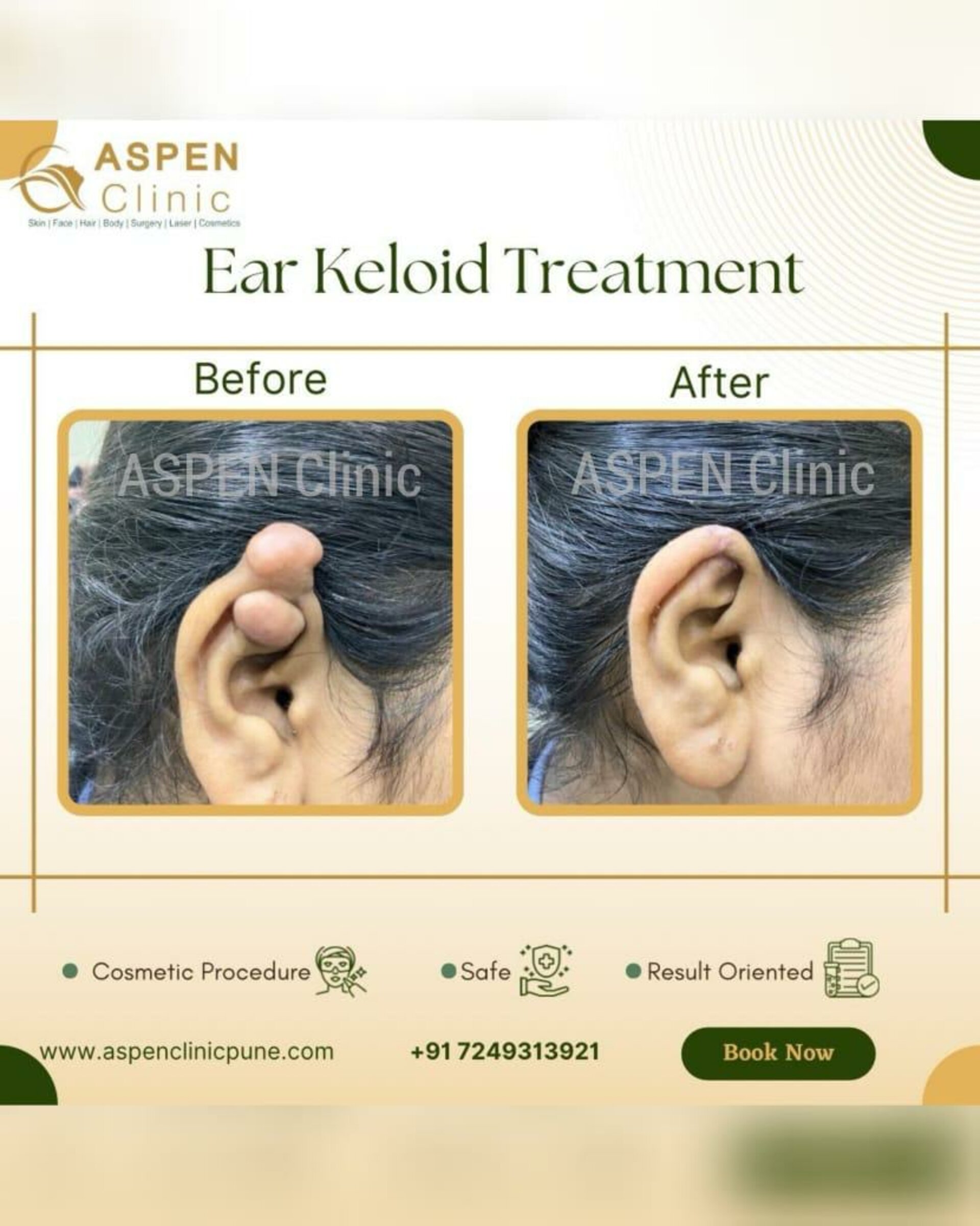Treatment for ear keloid in Kondhwa | Dr. Hina Khan
A keloid is a type of raised scar that occurs when the body overreacts to an injury, such as a cut or piercing, by producing an excess of collagen. Keloids can vary in size, shape, and color, and they often extend beyond the original injury site. They are typically smooth and shiny and may be pink, red, or darker than the surrounding skin.
Keloids are more common in individuals with darker skin tones and can be triggered by even minor skin trauma, such as acne scars, surgical incisions, or ear piercings. While they are not harmful, keloids can be itchy, tender, or cosmetically bothersome for some people.

Ear keloids are firm, rubbery, fibrous nodules that form on the ear after minor trauma, most commonly after ear piercing. They can occur in earlobes as well as in the skin and cartilage higher on the ear. Ear keloids can vary in color, from flesh-colored to pink to dark brown. Keloids can be itchy or painful.
Ear keloids are a type of scar tissue, so there isn’t any pus to squeeze out, like a pimple. Trying to pop a keloid on your ear can damage your skin and introduce bacteria, which can cause an infection. Keloids on your ear grow slowly. They may take up to 12 months before they become noticeable, and they may continue to grow for years. They’ll eventually stop growing, but they won’t go away without treatment.
Not everyone will develop an ear keloid after an injury. A keloid on your ear usually doesn’t hurt, but it may itch or feel uncomfortable, and you may feel self-conscious about it. Treatment options for keloids include corticosteroid injections, silicone gel or sheets, laser therapy, and surgical removal. However, keloids tend to recur even after treatment, and preventing their formation by avoiding unnecessary skin trauma is often the best approach. Treatment for keloids on the ear can vary depending on the size, location, and severity of the keloid.
Here are some common treatment options:
Corticosteroid injections: Intralesional corticosteroid injections are often the first-line treatment for keloids. These injections can help to reduce inflammation and flatten the keloid. Multiple injections may be needed over several months for optimal results.
- Silicone gel or sheets: Silicone gel or sheets can be applied directly to the keloid to help flatten and soften it. These products are typically applied daily for several months to achieve noticeable improvement
- Cryotherapy: Cryotherapy involves freezing the keloid with liquid nitrogen to destroy the excess tissue. This can help to reduce the size of the keloid and improve its appearance.
- Laser therapy: Laser therapy uses high-intensity light to target and break down the excess collagen in the keloid. This can help to flatten the keloid and reduce redness and itching.
- Surgical removal: Surgical removal of the keloid may be an option for larger or more severe keloids. However, there is a risk of the keloid recurring after surgery, so it is often combined with other treatments such as corticosteroid injections or radiation therapy to reduce the risk of recurrence.
It's important to consult with a doctor or surgeon to determine the best treatment approach for your specific case. They can assess the keloid and recommend the most appropriate treatment options based on your individual needs and preferences.
Reach out to your doctor as soon as you notice any unexplained growths on your skin, especially if they make you uncomfortable. Treatments are available to remove ear keloids at Aspen Clinic by Dr.Hina Khan.
ASPEN Clinic Skin Treatment, Hair Treatments, Laser, Surgery, Cosmetic Female Surgeon, Pune
NIBM Road
Read more
Yellow Peel Treatment in Pune | Dr. Hina Khan
ND YAG Laser Toning at NIBM Road | Dr. Hina Khan
Read more
Yellow Peel Treatment in Pune | Dr. Hina Khan
ND YAG Laser Toning at NIBM Road | Dr. Hina Khan
Consult Our Expert!